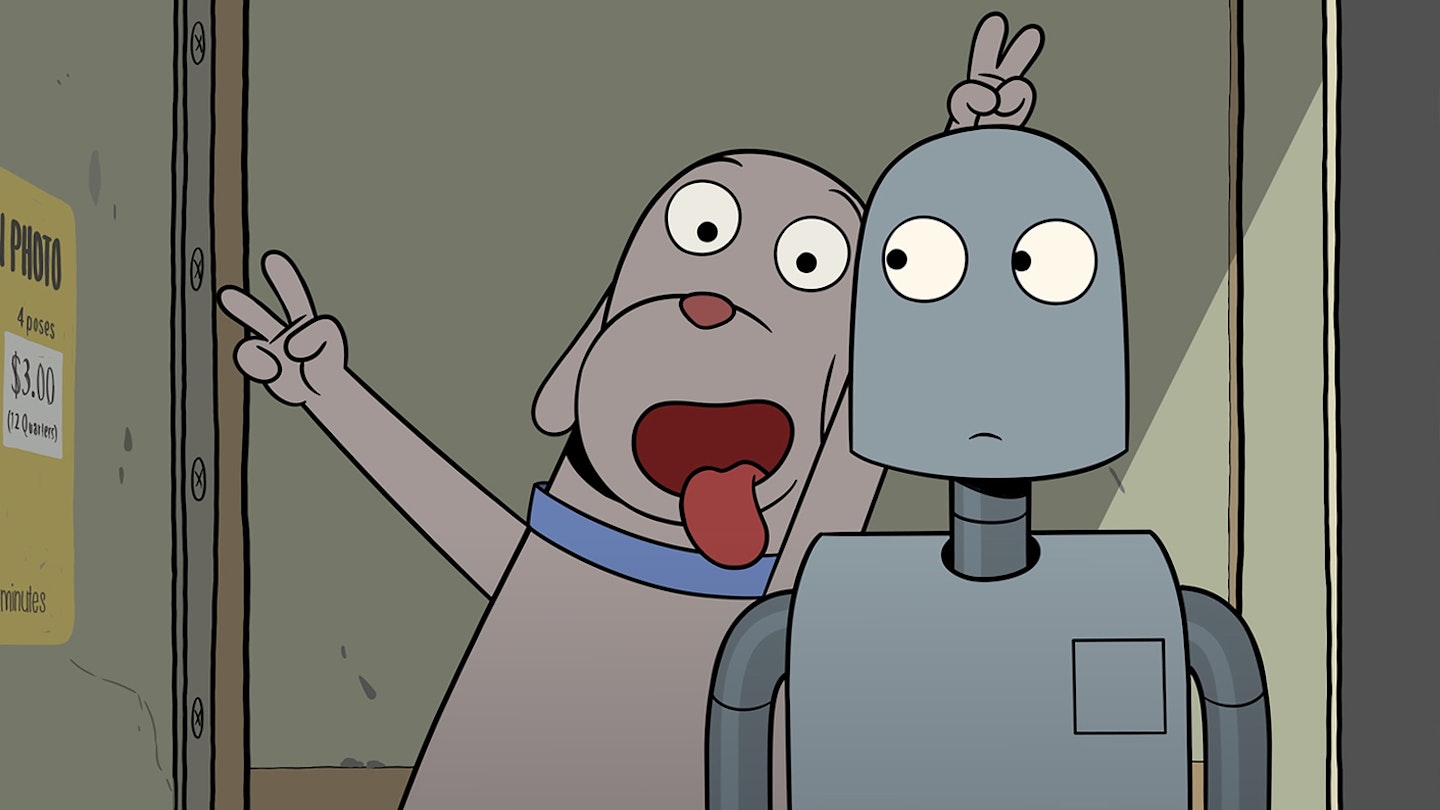It may come as a surprise to find that one of the most achingly beautiful stories of love and loss that you’ll see this — or any — year involves a dog, a robot, and a bit of rust. Robot Dreams is a film based on the enchanting 2007 graphic novel by Sara Varon, given new life for the big screen in glorious 2D animation by Pablo Berger. Like its source, it’s told wordlessly but is full of incident, imagination and, above all, emotion.

The opening shot shows the Twin Towers rising over a gloomy but animal-populated New York in the early 1980s: think Zootropolis without the Disney stylings. A lonely dog microwaves his evening meal and envies his coupled-up neighbours. Inspiration strikes when he sees an advert for an ‘Amica 2000’ robot, which he orders and builds into a new and loyal friend. Cue a montage straight from a romcom, as Robot gets to delight in the world for the first time and Dog is emboldened by his new friend to go out and live his life.
But when they head to Coney Island for a day at the beach, Robot is rusted into immobility and proves too heavy for Dog to shift alone. When he gets back with some tools, the beach is locked up for the season and, despite repeated attempts, he can’t get to Robot. The friends must endure a long separation, imagining their reunion but also dreading life alone.
A thoughtful, elegiac tone fits unexpectedly well with the childishly bold design.
What follows are imaginative flights of fancy as they wait the long months for the beach to reopen, as well as moments of despair and danger. But there are soaring grace notes too, in the wittiest bowling scene ever committed to film and a Busby Berkeley-style musical number in the world of The Wizard Of Oz. Robot fears that Dog will replace him; Dog looks for Robot in every caller to his door.
It creates a thoughtful, elegiac tone that fits unexpectedly well with the childishly bold design. The 2D animation is simple but not simplistic, colourful but never garish, and Berger ensures that the city teems with interesting characters as the background to the two isolated, silent leads. The director, who worked in silent film before with 2012’s Blancanieves, fills his screen with gently clever touches — like Dog stripping off his swimming shorts coyly under a towel, but then not replacing them with anything else, or the way his tail wags when he’s really happy.
As the odds of our heroes reuniting grow longer, the yearning for their lost love — platonic though it may have been — becomes overwhelmingly emotional. It becomes a personal, deeply felt reminder of how fragile, and how important, our connections really are.
